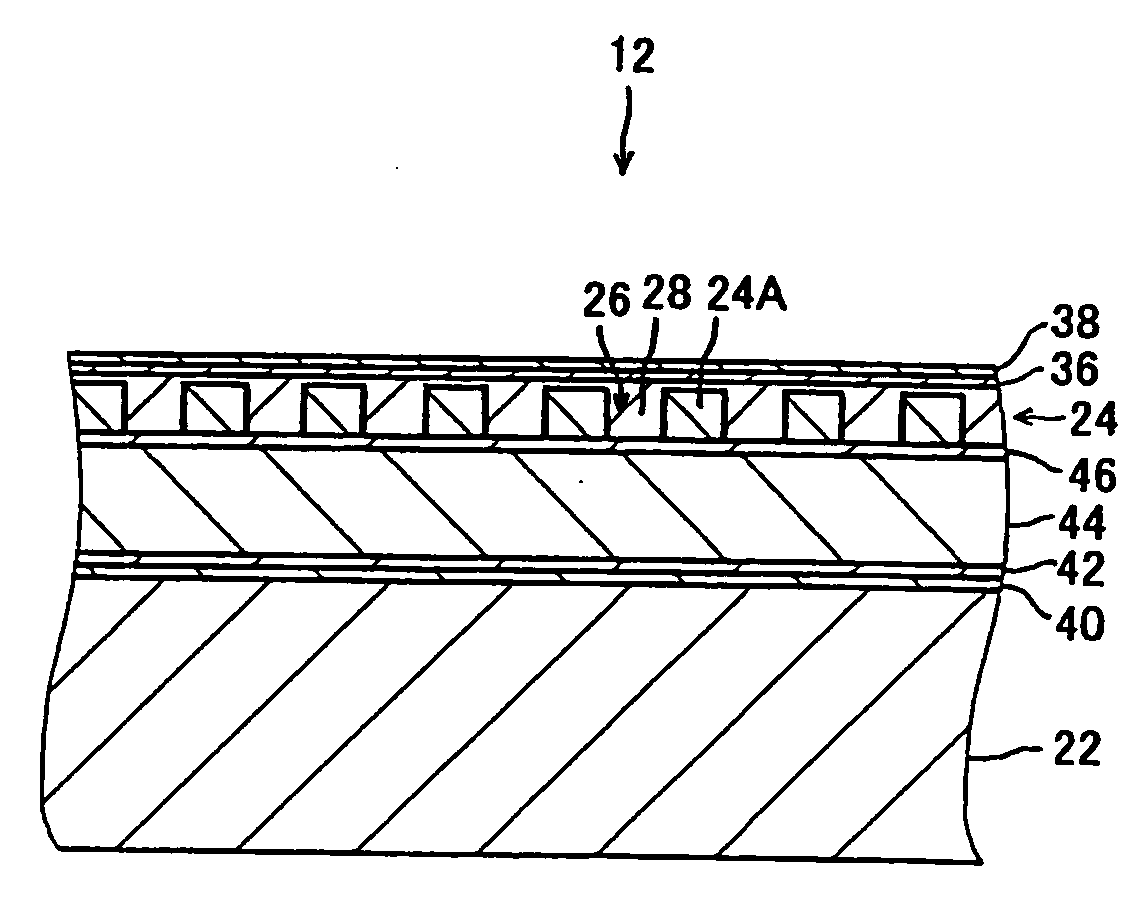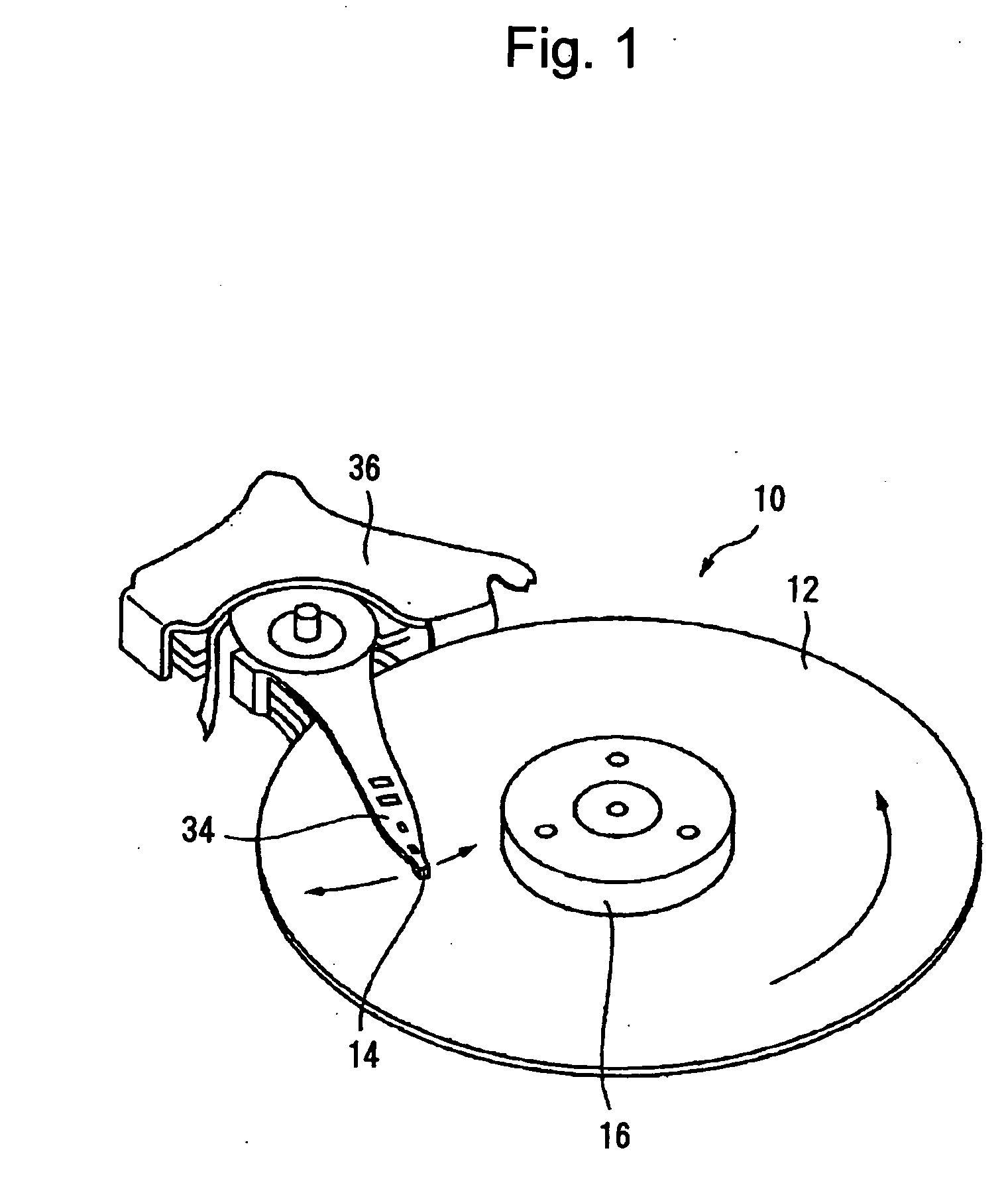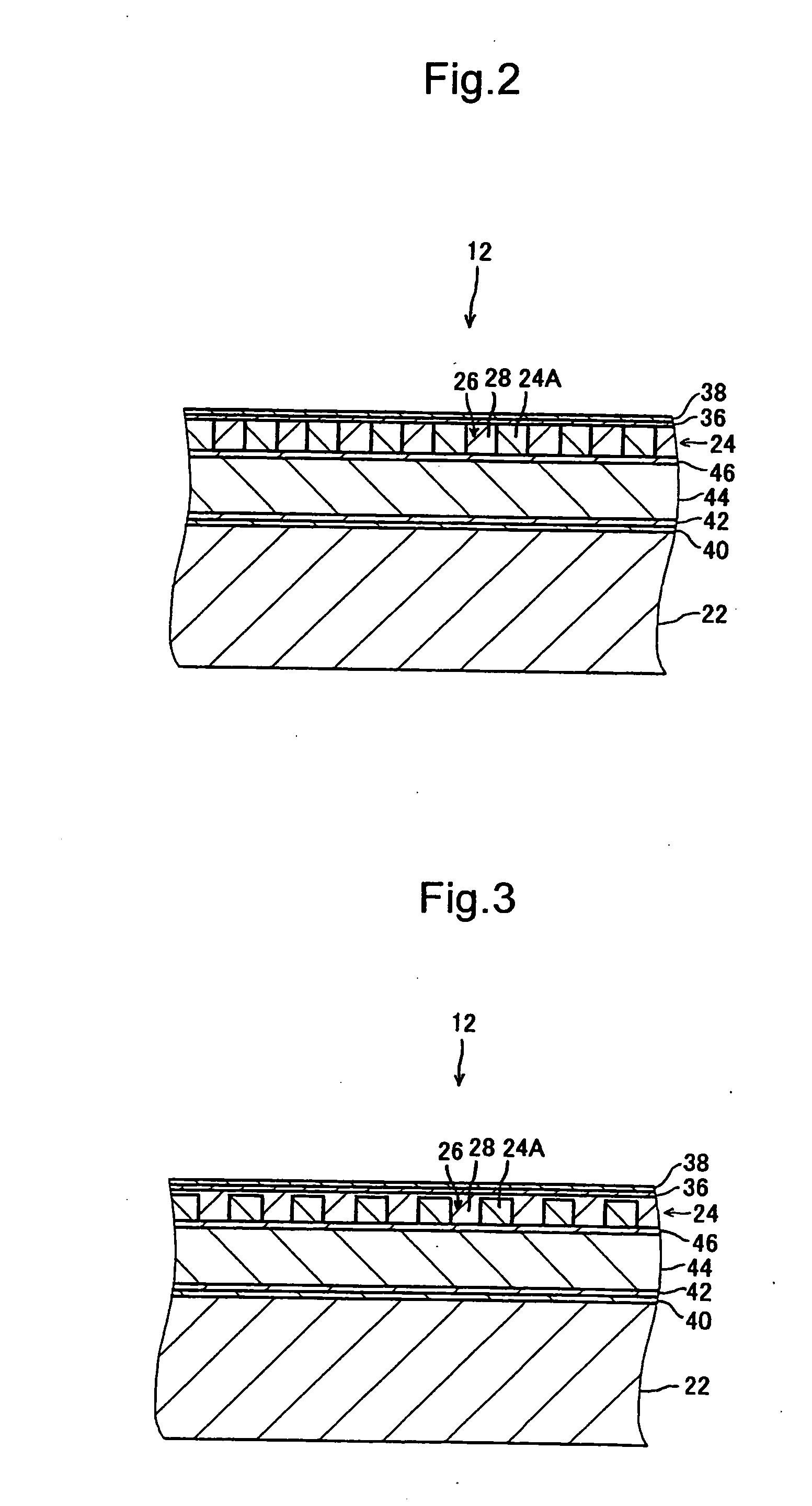Magnetic recording medium and magnetic recording/reproducing device
a recording medium and magnetic technology, applied in the field of magnetic recording medium and magnetic recording/reproducing device, can solve problems such as corrosion on the side surfaces of recording elements, and achieve the effects of less liable for damage, favorable recording/reproducing characteristics, and high reliability
- Summary
- Abstract
- Description
- Claims
- Application Information
AI Technical Summary
Benefits of technology
Problems solved by technology
Method used
Image
Examples
experimental example 1
[0053] Twenty samples of each of seven kinds having the structure the same as that of the magnetic recording medium 12 according to the first exemplary embodiment and 20 samples of one kind in which the ratio of the number of O atoms to the number of Si atoms in a filling material 28 was equal to or more than 2.0 were manufactured. Among these eight kinds of samples, the ratios of the number of O atoms to the number of Si atoms are different in their filling materials 28 (see Table 1) and the other structures are the same. Note that in Table 1, the ratio of the number of O atoms to the number of Si atoms in the filling material 28 in each kind of samples is given in increments of 0.1, and this is in consideration of the precision of measurement.
[0054] The substrate 22 had a diameter of approximately 65 mm and is made of glass. The recording layer 24 had a thickness of approximately 20 nm and is made of a CoCrPt alloy. The protective layer 36 had a thickness of approximately 4 nm an...
experimental example 2
[0064] As opposed to Experimental Example 1, 20 samples of each of eight kinds were manufactured. In each of the samples, a filling material 28 was deposited to have a thickness of approximately 20 nm on a continuous recording layer (yet to be processed) having a uniform thickness of 20 nm. Among these eight kinds of samples, the ratios of the number of O atoms to the number of Si atoms in their filling materials 28 are different from each other similarly to Experimental Example 1 described above (see Table 1). Note that in order to determine how effectively the filling material 28 serves to resist corrosion, the protective layer 36 and the lubricating layer 38 were not formed on the filling material 28. The other structures were the same as those of the samples in Experimental Example 1.
[0065] These eight kinds of samples were left to stand for approximately 48 hours in a high temperature and high humidity environment (at 80° C. with a humidity of 85%), and then their surfaces wer...
PUM
| Property | Measurement | Unit |
|---|---|---|
| thickness | aaaaa | aaaaa |
| thickness | aaaaa | aaaaa |
| thickness | aaaaa | aaaaa |
Abstract
Description
Claims
Application Information
 Login to View More
Login to View More - R&D
- Intellectual Property
- Life Sciences
- Materials
- Tech Scout
- Unparalleled Data Quality
- Higher Quality Content
- 60% Fewer Hallucinations
Browse by: Latest US Patents, China's latest patents, Technical Efficacy Thesaurus, Application Domain, Technology Topic, Popular Technical Reports.
© 2025 PatSnap. All rights reserved.Legal|Privacy policy|Modern Slavery Act Transparency Statement|Sitemap|About US| Contact US: help@patsnap.com



